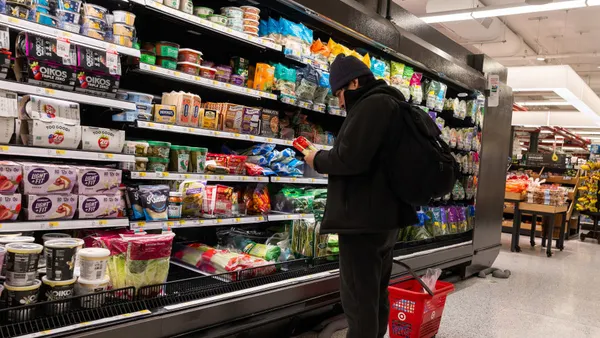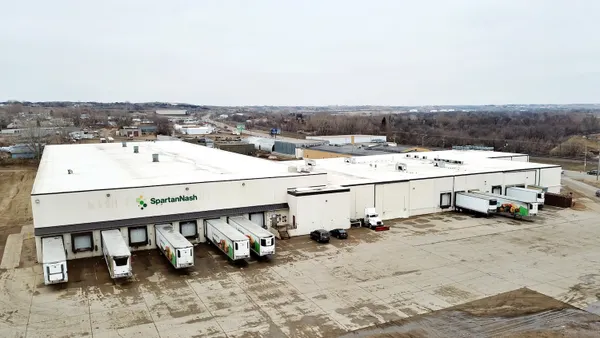Dive Brief:
- Walmart has partnered with Google to allow customers to voice order groceries from their Google Assistant-enabled devices including Google Home, iPhones and Android devices, the retailer announced in a blog post. Shoppers can add products directly to their carts by saying "Hey Google, talk to Walmart."
- Walmart will recognize customers’ past purchases to identify the correct brand and size of the product the consumer wants. Instead of telling the device to add a gallon of 1% Great Value milk, they can just tell the device to add milk. The more customers use the feature, Walmart U.S. senior vice president Tom Ward wrote in a blog post, the easier it will be to order groceries. The cross-platform technology will roll out to Google Assistant enabled devices throughout April.
- "We know when using voice technology, customers like to add items to their cart one at a time over a few days – not complete their shopping for the week all at once," wrote Ward. "So, this capability aligns with the way customers shop."
Dive Insight:
Voice ordering is still in its infancy across all industries, Jon Reily, vice president of commerce strategy at Publicis.Sapient, told Grocery Dive in a recent interview. But Walmart, known for its e-commerce and tech advancements, is staying ahead of the curve.
In January, Walmart ended its partnership with Google Express, which launched in 2017 and included voice ordering for more than 2 million Walmart.com products, and with the tech company's Shopping Actions service. The retailer said at the time it planned to focus efforts on the voice-shopping feature announced today.
With grocery, many shoppers are making repeat purchases, and using data to save prior purchases will help Walmart avoid one of the main causes of friction in voice shopping, which is the constant need for customers to provide details.
Experts say voice shopping for grocery has plenty of room to grow because unlike clothing or other products, many food items don't need to be looked at or tried on, and much of it includes replenishment items.
"I think simplicity is the easiest way to do it where there’s a lot of repeat purchases of groceries we do on a weekly basis and it’s easy to purchase things like laundry detergent," Carolina Milanesi, consumer tech analyst at Creative Strategies, recently told Grocery Dive. "It has a clear brand and you don’t have to specify the details of the actual product."
During a recent presentation to investors, Walmart chief financial officer Brett Biggs emphasized the role grocery will play in the retailer’s e-commerce growth this year, expected to be around 35%. Grocery was a key driver in Walmart's growth last year, with record comp sales in fresh foods and private labels. The new offering should win favor with customers as Walmart aims to maintain its edge in grocery e-commerce.
The retailer offers grocery pickup to about 2,100 stores and announced plans to expand to 3,000 stores by the end of 2019, Biggs said. Grocery delivery is available at 800 stores, with 800 more expected to offer the service by the end of this year.
Walmart's biggest competitor, Amazon, also offers voice shopping through its Echo devices. In a survey conducted by Retail Feedback Group, Walmart came ahead of Amazon as online grocer of choice, and its latest efforts with conversational commerce could solidify that further.
Voice ordering adoption is still low, however. According to Gartner, consumers prefer in-store shopping versus other methods with only .58% of those surveyed prefer shopping on smart speakers. Voice commerce sales were projected to reach $2.1 billion in 2018, making up less than half of 1% of all U.S. e-commerce sales, according to eMarketer.
Although analysts agree that voice shopping will take a while to mature, Walmart’s decision to focus solely on grocery with Google and use data to maximize convenience for consumers could help the retailer further boost its grocery e-commerce sales and strengthen its reputation as a go-to grocery provider.













